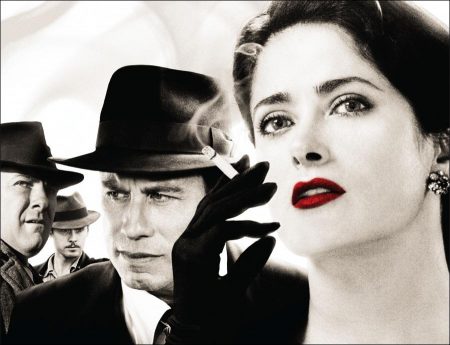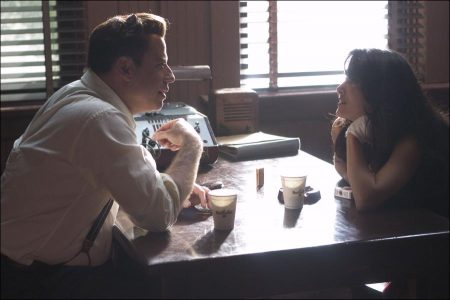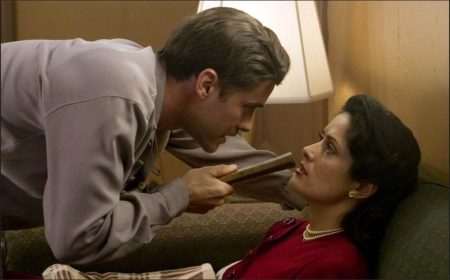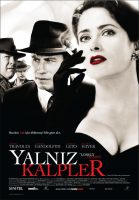Taglines: Love kills.
Lonely Hearts movie storyline. In the late 1940’s, Martha Beck and Raymond Fernandez were America’s notorious “Lonely Hearts Killers”. Their lethal scam was simple; they would swindle and then viciously murder lovelorn war widows who would answer their personal ads in which Ray would describe himself as a sexy Latin Lover. Ironically, Ray’s initial introduction to Martha was as a prospective mark. But when they met, it was love at first sight, perhaps as a result of their penchant for kinky sex and their mutual love for duplicity and easy money.
With Martha posing as Ray’s sister, they bilked elderly spinsters and widows of their savings and then viciously murdered them in a bloodbath of sexual frenzy. When they were arrested, Martha and Ray confessed to 12 killings, although it is believed the actual number is closer to 20. At their sensational trial, Martha and Ray cooed, held hands and seemed as though they could not get enough of each other. Their plea of not guilty by reason of insanity was rejected, and on August 22, 1949, the homicidal lovers were sentenced to death. After numerous appeals, they were electrocuted on March 8, 1951, side-by-side in Sing Sing prison.
Lonely Hearts is a 2006 American film directed and written by Todd Robinson. It is based on the true story of the notorious “Lonely Hearts Killers” of the 1940s, Martha Beck and Raymond Fernandez. The story of Beck and Fernandez was also the subject of the 1970 film The Honeymoon Killers, directed by Leonard Kastle and the 1996 film Deep Crimson, directed by Arturo Ripstein.
Lonely Hearts premiered in the U.S. at the Tribeca Film Festival on April 30, 2006. Following this the film had a screening at the Jacksonville Film Festival on May 18, 2006. The film was given a staggered release internationally throughout the final quarter of 2006 and into 2007. Lonely Hearts was scheduled to be given a limited release by Roadside Attractions in the U.S. on April 13, 2007. It was available to watch on Clickstar on-demand shortly after its domestic release. The film earned $188,565 in the United States and Canada, and $2,330,589 in the rest of the world, for a combined gross of $2,519,154. Critical reaction was mixed, and the film has a 49% rating on Rotten Tomatoes.
Film Review for Lonely Hearts
Ever since “The Godfather: Part 2” artistically ambitious crime dramas have superimposed gloomy philosophical reveries over blood and guts. That certainly is the dynamic of “The Sopranos,” one of the few that have managed to generate a tragicomic dialogue out of this double vision. Ordinarily, however, the metaphysics are smothered under the splatter.
“Lonely Hearts,” a beautifully photographed remake of Leonard Kastle’s 1970 cult B-movie “The Honeymoon Killers” — which was based on the actual crimes of the couple known as the Lonely Hearts Killers — succeeds better than many in balancing the philosophical with the visceral, although its villains’ dirty deeds still trump its deeper strain of melancholy. Let’s face it: It’s more exciting to watch Jared Leto, as Ray Fernandez, a lean, cocky con man and self-styled stud, put the moves on the credulous, love-starved women he meets through lonely-hearts clubs than to contemplate the despair of Elmer Robinson (John Travolta), the detective investigating Ray’s crimes.
As he often does when he steps out of the Hollywood mainstream, Mr. Travolta surprises with the depth of his acting. Elmer is a Long Island detective whose face is scrunched into a scowl of glum perplexity through most of the movie. Already eroded by years of grim police work, his faith in law and order — and in humanity — has crumbled after the unexplained suicide of his wife, who early in the film is found after shooting herself; it happens on their wedding anniversary, no less.
Elmer is estranged from his 15-year-old son, Eddie (Dan Byrd), and treats his girlfriend, Rene (Laura Dern), who works in his precinct, with despicable callousness. That you still feel for him is a triumph of Mr. Travolta’s wonderfully interior performance.
Elmer is balanced by James Gandolfini’s portrayal of his partner, Charles Hildebrandt, who sporadically narrates the movie and has the bulk of its wisecracking, hard-boiled dialogue. This is Tony Soprano as played by a less overbearing Broderick Crawford, on the right side of the law for once, but still formidable.
Despite all the care put into these characters, the killers carry the day as surely as the losers and lowlifes carried it in last year’s neo-noir “Hollywoodland,” which was set in roughly the same period. (Most of “Lonely Hearts” takes place in 1949.) Far more unsettling than the discovery of Elmer’s dead wife is a later scene in which Ray’s partner in crime, Martha Beck (Salma Hayek), catches him having sex with another woman. Martha shoots her from behind, then straddles Ray and keeps the action going while her victim tumbles to the floor in a pool of blood.
“Lonely Hearts” is the directorial debut of Todd Robinson, grandson of the real-life Elmer, to whom the movie is dedicated. Shot in desaturated shades by Peter Levy, it is at least the third movie (after “The Honeymoon Killers” and the well-regarded 1996 Mexican film “Deep Crimson”) based on the Lonely Hearts Killers, who were executed at Sing Sing in 1951 after committing a string of murders.
It is worth noting the differences between the villains in “Lonely Hearts” and the real criminals, who were portrayed much more accurately by Shirley Stoler and Tony Lo Bianco in the harsh, black-and-white “Honeymoon Killers.” The real Martha Beck, an ex-nurse who weighed more than 200 pounds — her execution had to be delayed because her body was too large to fit into the electric chair — was nothing like Ms. Hayek’s demented femme fatale. Ms. Hayek’s predatory beauty changes everything. Mr. Leto’s Ray Fernandez is closer to Patrick Swayze in “Dirty Dancing” or Christopher Walken in “Roseland” than to a lowlife Latino con man; his accent is barely discernible.
But as fictional characters in a movie that is fetishistic in its attention to period detail, Mr. Leto and Ms. Hayek work well together as an unsavory couple two rungs down the social ladder from Fred MacMurray and Barbara Stanwyck in “Double Indemnity.” Ms. Hayek’s Martha, a victim of childhood incest who begins as one of Ray’s marks and becomes his dominating, fiercely possessive lover, is a scary sociopath whose twisted sense of self-esteem derives from the power she exerts over him. That he’s willing to kill for her makes her feel like queen of the world.
Mr. Leto, strutting around in a toupee, is the spitting image of a vain, small-time gigolo high on his own oily charms. Once Martha gets her hooks into him, he metamorphoses from tarnished smoothie to trapped animal. The film allows Ray no dignity. At his execution the camera stares unblinkingly as he is dragged, shouting and kicking, to the electric chair.
We hear the screams beneath his mask as smoke pours from his body. It may not be intentional, but “Lonely Hearts” appears to be ardently in favor of capital punishment.
Lonely Hearts (2007)
Directed by: Todd Robinson
Starring: John Travolta, James Gandolfini, Salma Hayek, Jared Leto; Scott Caan, Laura Dern, Michael Gaston, Alice Krige, Andrew E. Wheeler, Dagmara Dominczyk, Bailee Madison
Screenplay by: Todd Robinson
Production Design by: Jon Gary Steele
Cinematography by: Peter Levy
Film Editing by: Kathryn Himoff
Costume Design by: Jacqueline West
Set Decoration by: Traci Kirshbaum
Art Direction by: David Eckert
Music by: Mychael Danna
MPAA Rating: R for strong violence and sexual content, nudity and language.
Distributed by: Samuel Goldwyn Films
Release Date: April 13, 2007
Views: 141






